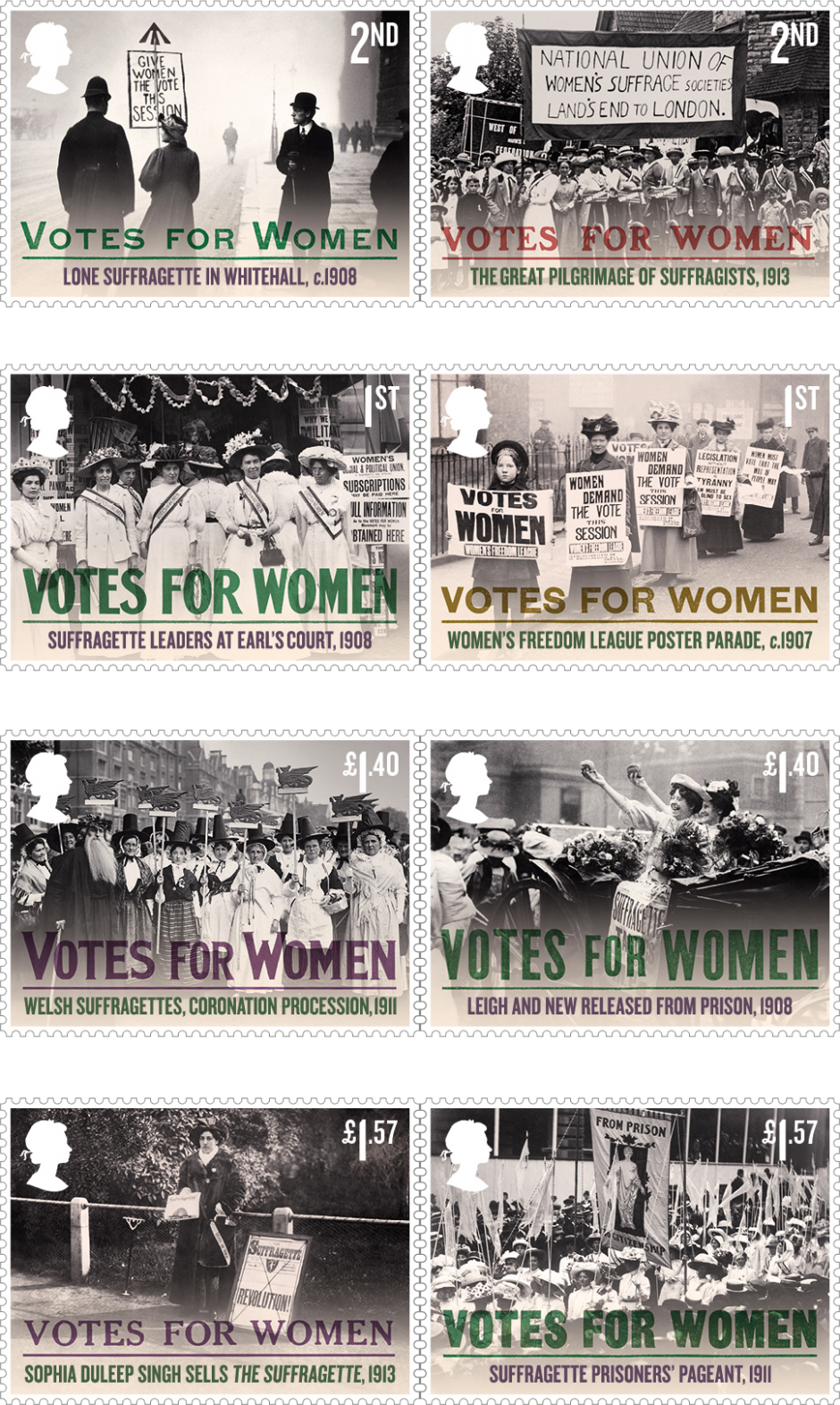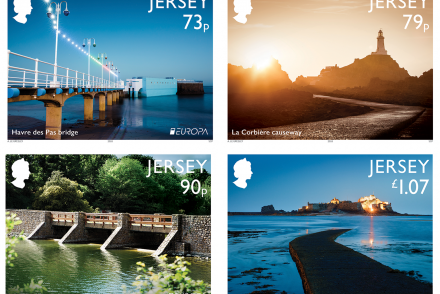Votes for Women
Great Britain – Celebrating the centenary of the Representation of the People Act, a hundred years on, this stamp issue presents an overview of the trials and tribulations of the women who campaigned tirelessly to win the vote; beginning in the early 1800s right up until the vote being granted in February 1918. Documenting some of the campaign activities and public actions, the eight stamps are split between examples of the major set piece demonstrations and publicity activity that took place, as well as some of the individuals involved. Previous stamp issues related to this have celebrated individual women from the movement, which are 2008’s Women of Distinction – Millicent Fawcett, 2006’s 150th Anniversary of the National Portrait Gallery – Emmeline Pankhurst and 1968’s Votes for Women stamp – statue of Emmeline Pankhurst. However, none have directly reflected and commemorated the movements behind the fight for the vote for women as a whole, as this issue does.
This new display is dedicated to those who campaigned tirelessly for over 50 years to achieve votes for women. Forming part of the national commemorations marking the centenary of the 1918 Act that gave some women the right to vote for the first time, the display features iconic objects from the Museum of London’s unique Suffragette collection, including Emmeline Pankhurst’s hunger strike medal. At the heart of the exhibition is a powerful, newly commissioned film that highlights the personal stories of lesser known Suffragettes and reflects on the contemporary relevance of the militant campaign that continues to inspire, shock and divide opinion.
2nd Class: The Lone Suffragette in Whitehall, c.1908
A suffragette demonstrates in Whitehall, circa 1908, walking in the road because people were not permitted to protest on pavements and faced being arrested for obstruction if caught. Her placard demands that Parliament give the vote to women during the current session. The convict’s arrow that surmounts the sign may indicate she had been to prison.
2nd Class: The Great Pilgrimage of Suffragists, 1913
In summer 1913, the NUWSS organised a pilgrimage to show the Government, via non-militant action, the strength of its demand for ‘votes for women’. Starting on 18th June, the South Western, West of England and Surrey, Sussex and Hants Federation travelled from Land’s End to London. Around 50,000 women gathered in Hyde Park on 26th July.
1st Class: Suffragette Leaders at Earl’s Court, 1908
On 25th July 1908, the WSPU was given permission to hold a demonstration and fete within the Hungarian Exhibition at Earl’s Court in London. Wearing their ‘Votes for Women’ sashes, four WSPU leaders (from second left to right: Mabel Tuke, Christabel Pankhurst, Emmeline Pethick-Lawrence and Annie Kenney) pose in front of one of the stalls.
1st Class: Women’s Freedom League Poster Parade, c.1907
Formed in 1907, the WFL organised this poster parade to promote the suffrage message. At the beginning of the 20th century, it was undoubtedly something of an ordeal for women to be walking in the gutter, bearing a placard, while surrounded by curious onlookers, As time passed by, however, they soon became accustomed to it.
£1.40: Welsh Suffragettes, Coronation Procession, 1911
For the suffrage ‘Coronation Procession’, which took place in the London on 17th June 1911, Welsh suffragettes and suffragists put aside political differences to march together, each carrying a red Welsh-dragon standard. Many had made their own costumes; some using purple, white and green material, which were topped by the traditional Welsh hat.
£1.40: Leigh and New Released from Prison, 1908
WSPU members Mary Leigh and Edith New were freed from Holloway Prison in London on 22nd August 1908 and were presented with purple, white and green bouquets. Imprisoned for throwing stones at 10 Downing Street, they were the first suffragettes to demonstrate what Emmeline Pankhurst called ‘the argument of the broken window pane’.
£1.57: Sophia Duleep Singh sells the Suffragette, 1913
Princess Sophia Duleep Singh, daughter of an Indian maharaja, is pictured selling copies of the WSPU newspaper The Suffragette in April 1913. A member of the Women’s Tax Resistance League (whose official motto was ‘No Taxation Without Representation’), the princess appeared in court on several occasions after refusing to pay taxes.
£1.57: Suffragette Prisoners’ Pageant, 1911
The ‘Prisoners’ Pageant’ was a striking element of the suffrage ‘Coronation Procession’ in 1911. Seven hundred women participated, representing the number of suffragettes who had been jailed. Dressed in white, they carried silver lances from which pennants were flown. The ‘From Prison to Citizenship’ banner symbolised their determination.




